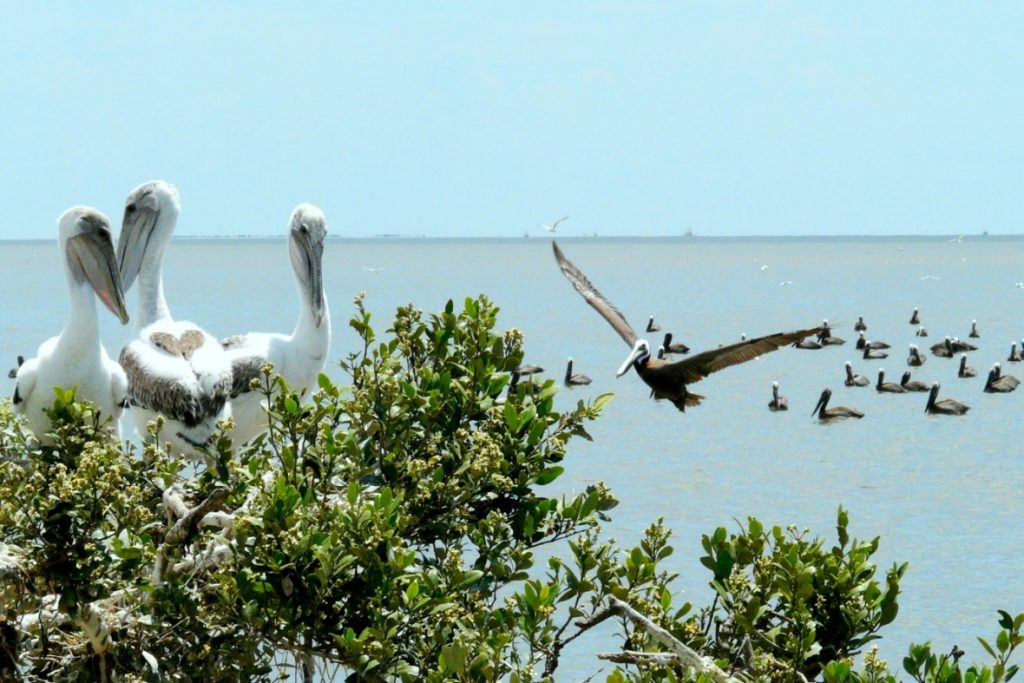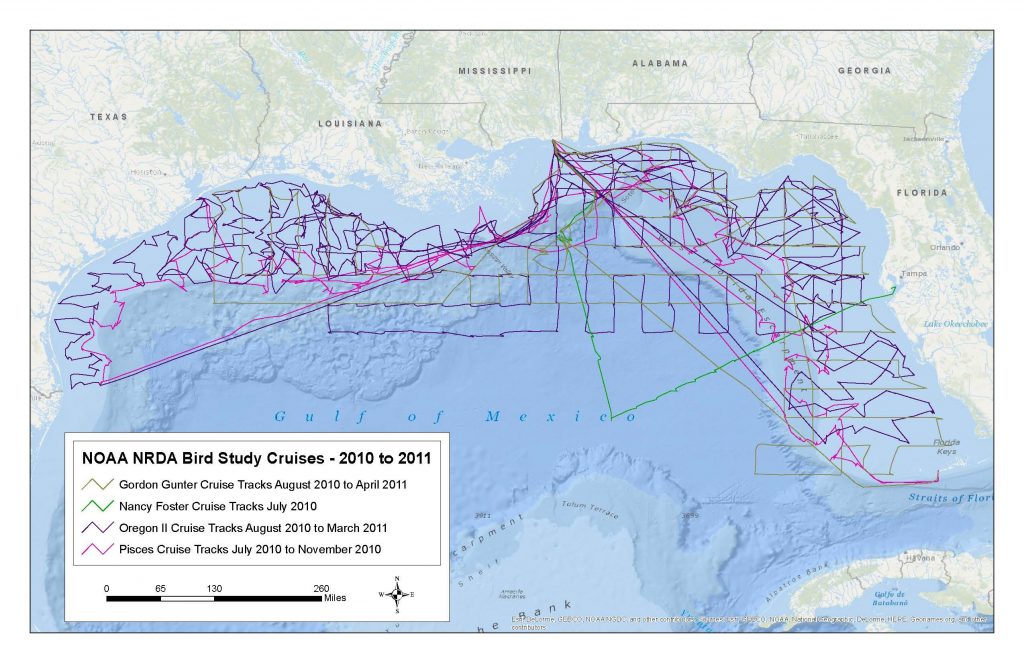
GoMAMN Newsletter: Issue 7
Greetings from the GoMAMN Coordination Committee! This is the seventh issue of the GoMAMN newsletter, which is distributed on a quarterly basis. The purpose of this newsletter is to share information about the Network and ongoing monitoring projects, along with news and opportunities relevant to our work as we collectively strive to advance bird conservation along the Gulf of Mexico.
Team Member Spotlight: Peter Frederick

Peter is a research professor in the Department of Wildlife Ecology and Conservation at the University of Florida.
In this interview, Peter provided us with details on his background and his perspective on avian monitoring in the Gulf. Peter also shared how he was introduced to ornithology at a young age and why it’s impossible to pick a favorite place on the Gulf Coast.

Monitoring Project Highlight: Ecological Drivers of Brown Pelican Movement Patterns, Health, and Reproductive Success in the Gulf of Mexico
By Juliet Lamb, Yvan Satgé, Rochelle Streker, and Patrick Jodice
The Gulf of Mexico contains a high density of oil infrastructure and also supports a rich assemblage of seabirds. Understanding the effects of oil and gas activity on seabirds in the region requires a thorough understanding of reproductive ecology, foraging ecology, physiology, and habitat use. Because of its distribution patterns, behavior, and known sensitivity to contaminants, the brown pelican is a good indicator of species-level effects of interaction with coastal and marine development.
Our objectives were to assess reproductive ecology, movement patterns, habitat use, diet, physiology, and exposure to polycyclic aromatic hydrocarbons. Research was conducted at seven pelican colonies throughout the Northern Gulf of Mexico between 83° and 98° W and 27° and 31° N. We deployed 85 GPS satellite tags on breeding adults to measure and describe home ranges, migration strategies, and risk exposure to oil and gas development and other surface pollutants. We also collected data on colonies (e.g., reproductive success, diet, contaminants).
Home range size and the probability and distance of migration were positively correlated with colony size. Pelicans from all colonies overlapped in space use in the Mississippi River Delta region of Louisiana during the nonbreeding season. Diet was primarily menhaden in the eastern and central regions but was more varied in the western region. Risk of exposure to contaminants was often higher in the west and central Gulf of Mexico compared to the eastern Gulf of Mexico, although factors other than region also contributed to exposure risk. Most of the response variables we measured or modeled varied substantially among colonies and regions, although individual characteristics also were significant. The effects of environmental or anthropogenic stressors on pelicans may differ based on a combination of environmental, individual, and colony-based attributes and may not be strictly “region-based”. The use of the Mississippi River Delta region of Louisiana during migration by individuals from all regions suggests this is a hot spot for pelicans and risk exposure.
Paper Highlight: “Pelagic seabird density and vulnerability in the Gulf of Mexico to oiling from the Deepwater Horizon/MC-252 spill”
by J.C. Haney, J.M. Hemming and P. Tuttle

Key Takeaway Points:
- The 13-month survey observed 23,000 individuals from 45 species of estuarine, coastal, offshore, and pelagic birds.
- This total number of individual bird observations is greater than all previous standardized, formal seabird studies conducted in the Gulf of Mexico.
- Seven birds were observed to be visually oiled; identification of birds with trace or light oiling under ship survey conditions is extremely difficult.
News
Florida Trustees Initiate Second Restoration Plan
Louisiana Trustees Approve Massive 1,200-acre Marsh Restoration Project in Barataria Basin
Events
GOMA Virtual Tools Cafe
Biweekly August 4 – November 17, 2020
2020 NOAA Environmental Data Management Workshop
August 17 – 21, 2020, virtual
2020 Annual Gulf Coast Land Conservation Conference
Sept 15 – 18, 2020, virtual
Opportunities
NAWCA grant proposals
next deadline: Oct 15, 2020
Did you know?
The Arctic Tern has the world’s longest distance migration, traveling annually from breeding grounds in the Arctic to wintering grounds in the Antarctic. Over the course of their lifetime, one of these birds can travel over 970,000 miles!
For more information contact Randy Wilson or Rachel Kirpes
